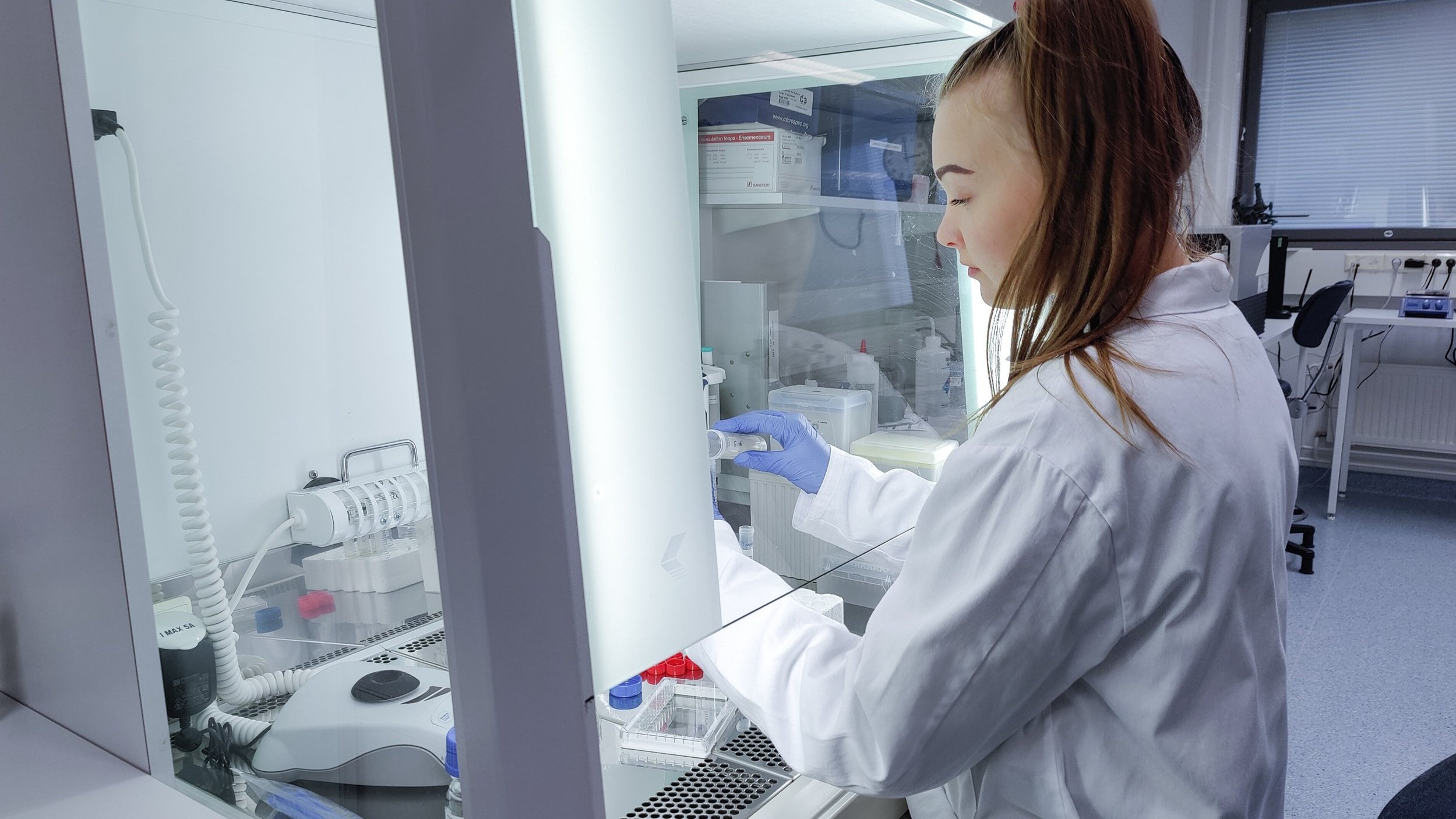How E-TRF and biosensors can help reveal new disease biomarkers
Accurate detection of severe diseases typically requires more than just one biomarker and their discovery is exceptionally troublesome. Aqsens Health aims to speed up the process. Our E-TRF method, modulators and measurement protocols are able to detect groups of biomarkers in a single measurement from biological samples. This opens up a world of new possibilities in disease detection and classification.
How are E-TRF and biomarkers connected?
E-TRF is a method that measures a group of similar or specific analytes. In other words, E-TRF does not initially detect any single biomarker, but it measures the whole biochemical and chemical environment of a sample and recognizes very small changes or abnormalities in the overall composition of the sample.
The E-TRF label is composed of two main parts. The first part is the outer composition of the label, which is innately very sensitive to changes in the sample’s chemical environment. The second part is Europium, which is essential in measuring time-resolved fluorescence with the TRF-reader.
With E-TRF we can simultaneously measure different metabolites in several separate wells on the same well plate. We call these measurements the “metabolic fingerprint of a disease”.
How can E-TRF and the biosensor be used in finding new biomarkers?
As a method E-TRF is very unique in that it can be used to detect targets that are still unknown. E-TRF by itself can be used to measure different changes in the sample, but it can also be combined with Aqsens Health’s phage-biosensor. The phage-biosensor detects the presence of a biomarker or several biomarkers.
The method can be used not only for the detection of diseases, but also in the classification of potential biomarker groups and in narrowing down potential biomarker populations.
What’s the process like?
There are a few different ways to look for biomarkers using E-TRF. Both processes begin with the selection of a suitable set of disease samples for the biopanning process.
The biological biomarker research process for E-TRF involves several biopanning cycles, which help in the selection of potential phage-biosensors. The functionality of these phage-biosensors is tested against individual disease samples. An acceptable phage is able to differentiate between healthy and disease samples, or even between different classes of a disease. The potential phage-biosensor is then selected for further research. During the next steps, the phages enrich the biomarkers in disease samples, and the biomarker space is narrowed down for the more demanding correlation analyses performed using gas- and liquid chromatographies, mass-spectrometry or nuclear spectroscopy.
The chemical biomarker research process shares similarities with the biological process. A suitable set of disease samples is chosen such as in the biological research process, but in the chemical process different chemistries from our chemical library are added into the sample itself. The reactivity and the chemistry’s ability to modulate the E-TRF signal in healthy and disease samples is then assessed. The chemistries that work will be tested again on individual samples, after which the chemicals can be determined to be what we refer to as fingerprinting chemistries.
What can we do by combining the chemical and biological processes?
These processes deliver a concise dataset for data analyses. By using basic statistical tools and the help of machine learning algorithms, we can turn data into information. By combining E-TRF with the already well-established methods, like gas- and liquid chromatographies, mass-spectrometry or nuclear spectroscopy, E-TRF creates endless possibilities in the search for new biomarkers.
Janne Kulpakko
Chief Scientific Officer
Aqsens Health Oy

